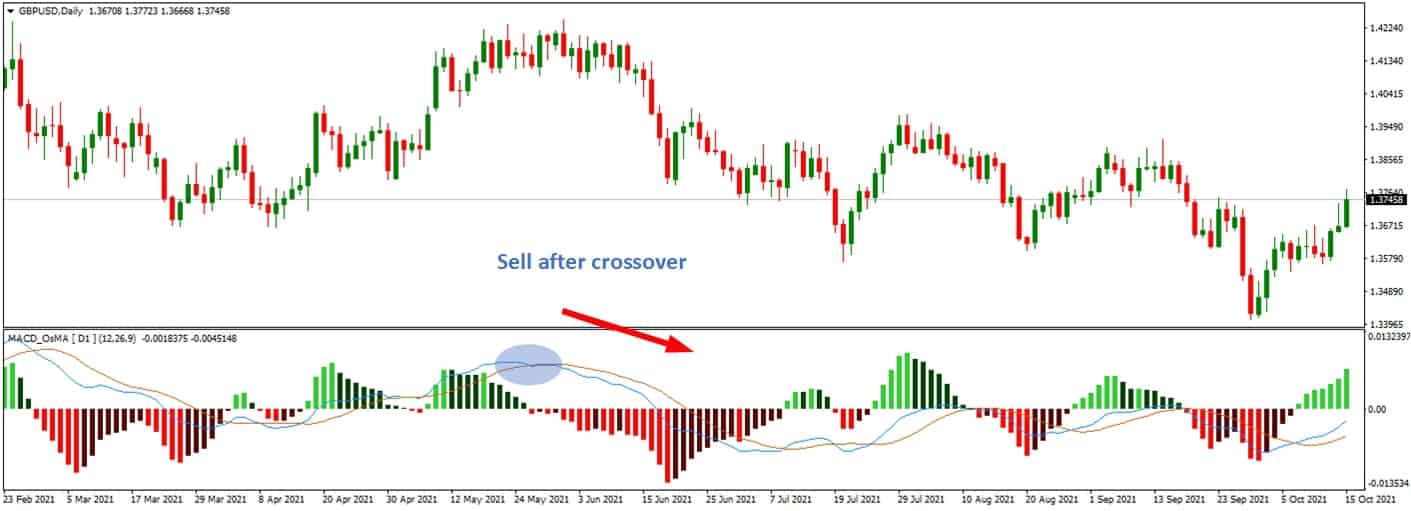The 1-hour chart is a favorite among traders because it balances the immediacy of intraday trading with the broader perspective of swing trading. It allows traders to capture short-term trends and identify potential entry and exit points within the same trading day, making it ideal for those looking to take advantage of market movements without constant monitoring. Additionally, the 1-hour timeframe filters out much of the market noise in shorter timeframes, providing more precise signals and reducing the likelihood of false entries.
For swing traders, the one-hour chart offers a detailed view of market trends over several days, helping to identify significant trend changes and potential longer-term trade setups. This combination of short-term precision and medium-term trend analysis makes the one-hour chart a versatile tool in a trader’s arsenal.
Most of my Expert Advisors use the 1-hour chart as the primary trigger time frame. I like to use it to avoid overtreading.
The Best MACD Settings for Intraday Trading – Case Study Video recapitulation is presented below:
The Best MACD Settings For 1 Hour Chart
The best MACD settings for the one-hour chart are parameters 24, 52, and 18, and the default settings are parameters 12, 26, and 9. Both settings showed similar results. However, we recommend standard settings for one-hour chart trading.

In this experiment, we conducted a case study to identify the best settings for the 1-minute chart using the Moving Average Convergence Divergence (MACD), custom channel, and a vital level indicator. We tested various combinations of the MACD settings, including fast EMA settings of 12, 24, and 6; slow EMA settings of 26, 52, and 34; and MACD SMA settings of 5, 9, and 18. The channel indicator was used to establish the bullish or bearish trends, while the critical level indicator highlighted key price levels based on previous highs and lows.
The trading rules for 1-hour charts were as follows. For buy trades, we entered a position if there was a bullish MACD cross or a cross above the zero line, provided the price touched a significant level identified by the critical level indicator and was within a bullish channel. The stop loss was placed at the last significant level swing, and the target was set at the next significant level. For sell trades, the criteria were similar. Still, in the opposite direction, we looked for a bearish MACD cross or a cross below the zero line, a touch of a significant level, and confirmation that the price was within a bearish channel. The stop loss and target settings mirrored those of the buy trades.
This experiment tested each MACD setting combination to determine which provided the most reliable signals. We analyzed the results to find the optimal settings that balanced signal accuracy and trade profitability. The goal was to enhance our trading strategy by using the most effective indicator settings for the 1-minute chart, which could then be applied to the 1-hour chart for more comprehensive analysis and trading decisions.
We tested the last 100,000 candles for major forex pairs.
The results of our experiment revealed that the best MACD settings for the one-hour chart are fast EMA of 24, slow EMA of 52, and MACD SMA of 18. These settings were compared with the default MACD parameters of fast EMA of 12, slow EMA of 26, and MACD SMA of 9—both sets of parameters produced similar results regarding signal accuracy and trade profitability.
Despite the slight edge shown by the non-standard settings (24, 52, and 18), the similarity in performance led us to recommend the standard MACD settings (12, 26, and 9) for trading on the one-hour chart. The standard settings are widely accepted, well-documented, and more familiar to most traders, which makes them easier to implement and interpret. Therefore, while both sets of parameters are practical, using the standard settings provides the benefit of consistency and ease of use.
























